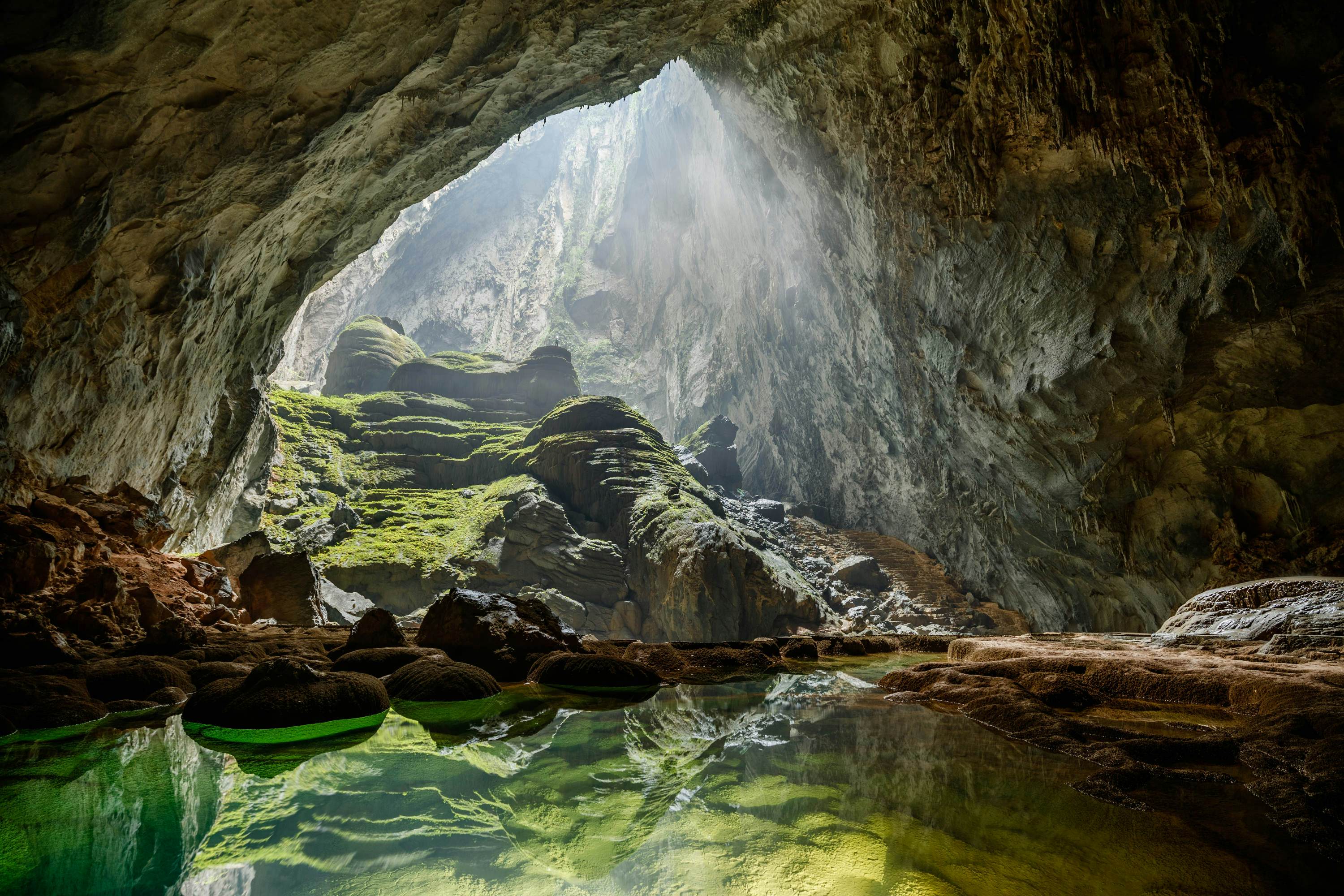It’s believed to have formed between 2 and 5 million years ago.

Sitting completely undisturbed until as recently as 2009, Hang Son Doong cave in Vietnam dates back to the Pliocene or late Miocene some 2 to 5 million years ago. The 5-kilometer (3-mile) long cave system boasts 200-meter (656-foot) high ceilings, making it by far the largest cave ever discovered on Earth.
The cave is so large, in fact, it measures roughly five times larger than the previous “world’s largest cave” title holder, Malaysia’s Deer Cave. But despite its size, the entrance was first discovered by local man Hồ Khanh in 1991 and wasn’t able to be found again for the next 18 years.
Eventually managing to uncover the cave’s overgrown entrance in 2009, a team from the British Cave Research Association was finally able to document its impressive size.
Located in Phong Nha-Ke Bang park on the coast of Vietnam, the park boasts more than 150 limestone caves and grottos, with many remaining unexplored. Most of the park’s cave systems are connected, and together they would form a total length of 200 kilometers (124 miles).
Son Doong’s passages have a volume of 38.4 million cubic meters (1.35 trillion cubic feet), a length of 9 kilometers (5.5 miles), and a width of 198 meters (650 feet) – wide enough, in fact, that a Boeing 747 would be able to fly straight though. Despite being heavily shrouded in the forest’s foliage, even the entrance to the cave stands an impressive 50 meters (164 feet) tall.
Inside runs a fast-flowing river that caused the formation of the cave over hundreds of thousands of years. During the rainy season this river floods and fills the vast system, making it inaccessible.
The cave is also home to some impressive stalagmites, including the world’s largest which stands 70 meters (229 feet) high and is called the “Hand of Dog”.
.jpg)
Adding to the cave’s otherworldly atmosphere, two large sinkholes have opened up skylights along the otherwise pitch-black passages that allow the forest above to spread down into the depths of the cave. The smaller of the two, called “Watch Out for Dinosaurs”, is believed to have formed in the last 500,000 years as a result of the forest floor becoming too dense and collapsing.
The larger doline, “The Garden of Edam”, stretches 163 meters (534 feet) and has a much thicker forest floor. Trees in this sinkhole grow to over 30 meters tall and can often cause those exploring the cave to get lost and disorientated amongst the thick undergrowth.
Birds, monkeys, and snakes have all been found inside these sinkholes. As many of the species in the area are on the IUCN Red List of Threatened Species, it’s expected that the caves could hold hope for these populations and perhaps some yet-to-be-discovered species.
The lower passages of the caves have already been found to be the home of at least one new species of woodlouse and one new species of fish.
One untouched passage doesn’t experience that same rainy season flooding as the rest of the cave, and that leaves it filled with perfectly preserved 400-million-year-old fossils.
The full glory of this diverse cave was mapped by National Geographic in 2010 and a full virtual tour is available online. It’s believed, however, that we’ve only explored just 30 percent of the cave’s full system.

In 2019, a team of British divers set out to explore the underwater passages of the cave. Some 120 meters (393 feet) underwater they discovered another tunnel that connects to the cave, and which runs for 1 kilometer (0.62 miles). This finding adds another 1.6 million cubic meters (56.5 million cubic feet) in volume to this already enormous cave.
Experts are still trying to establish where the innermost water flows from, leading some researchers to believe it connects to an even larger, undiscovered cave.
Very little is known about the cave today; it’s had even fewer visitors than Mount Everest and visitor numbers are strictly limited to 1,000 people per season, with a hefty price tag of almost $3,000 per visitor.
The somewhat inaccessibility of the cave has led the Vietnamese government to propose the installation of a 10.6-kilometer (6.6-mile) cable car system to run through the cave. This proposal has been met with objection from environmental organizations, who fear the cave’s undisturbed natural beauty may be affected.




Recommended Comments
There are no comments to display.
Join the conversation
You can post now and register later. If you have an account, sign in now to post with your account.
Note: Your post will require moderator approval before it will be visible.